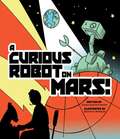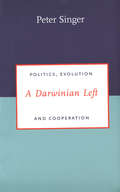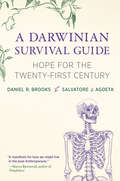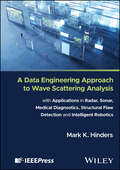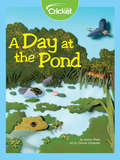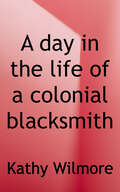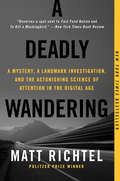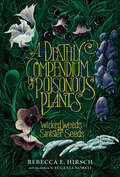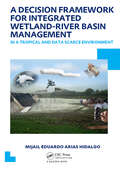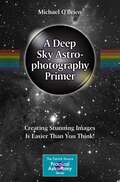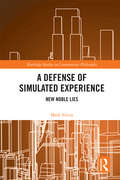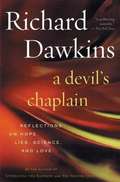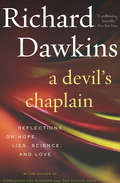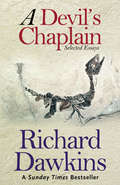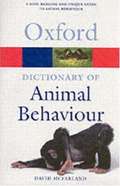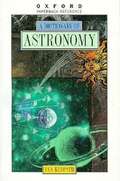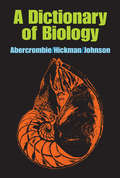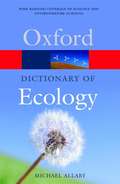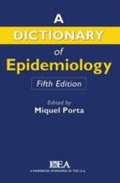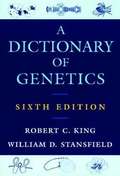- Table View
- List View
A Curious Robot on Mars!
by Bethany Straker James Duffett-SmithFar off into space--186 million miles to be precise--a fearless robot rover travels all by his lonesome. He is on a crucial mission from Earth, eagerly seeking to answer the much-anticipated question: Does life exist on Mars? But there is nothing to be seen on this planet except miles of rocks. He loses support from mission control and finds himself alone and cut off from civilization. But the curious little robot is resilient! After noticing a flash of light shining brilliantly through the crack of a rock, he instantly realizes his mission is far from over. He slowly inches towards the edge, but then suddenly falls perilously into the darkness! What will he discover?Bethany Straker's vibrant illustrations accompany James Duffett-Smith's suspenseful tale of discovery and hope. A Curious Robot on Mars! will motivate any and all readers to strive for one's ambitions--and most importantly, to always be curious!
A Cybernetic View of Biological Growth
by Tony StebbingMaia is the story of an idea, and its development into a working hypothesis, that provides a cybernetic interpretation of how growth is controlled. Growth at the lowest level is controlled by regulating the rate of growth. Access to the output of control mechanisms is provided by perturbing the growing organism, and then filtering out the consequences to growth rate. The output of the growth control mechanism is then accessible for interpretation and modelling. Perturbation experiments have been used to provide interpretations of hormesis, the neutralization of inhibitory load and acquired tolerance to toxic inhibition, and catch-up growth. The account begins with an introduction to cybernetics covering the regulation of growth and population increase in animals and man and describes this new approach to access the control of growth processes. This book is suitable for postgraduate students of biological cybernetics and researchers of biological growth, endocrinology, population ecology and toxicology.
A Dark Place in the Jungle
by Linda SpaldingFollow writer Linda Spalding to Borneo's threatened jungles on the trail of orangutan researcher Birute Galdikas, who together with Dian Fossey and Jane Goodall formed the famed trio of "angels" Louis Leakey encouraged to study great apes in the wild. She went into the jungle in 1971 and emerged decades later with a run-down empire crumbling around her. Spalding confronts the sad failure of a woman trying desperately to mother a species to survival; the dangers and temptations of eco-tourism; and the arrogance of our inclination to alter the things we set out to save.
A Darwinian Left
by Peter SingerIn this ground-breaking book, a renowned bioethicist argues that the political left must radically revise its outdated view of human nature. He shows how the insights of modern evolutionary theory, particularly on the evolution of cooperation, can help the left attain its social and political goals.Singer explains why the left originally rejected Darwinian thought and why these reasons are no longer viable. He discusses how twentieth-century thinking has transformed our understanding of Darwinian evolution, showing that it is compatible with cooperation as well as competition, and that the left can draw on this modern understanding to foster cooperation for socially desirable ends. A Darwinian left, says Singer, would still be on the side of the weak, poor, and oppressed, but it would have a better understanding of what social and economic changes would really work to benefit them. It would also work toward a higher moral status for nonhuman animals and a less anthropocentric view of our dominance over nature.
A Darwinian Survival Guide: Hope for the Twenty-First Century
by Daniel R. Brooks Salvatore J. AgostaHow humanity brought about the climate crisis by departing from its evolutionary trajectory 15,000 years ago—and how we can use evolutionary principles to save ourselves from the worst outcomes.Despite efforts to sustain civilization, humanity faces existential threats from overpopulation, globalized trade and travel, urbanization, and global climate change. In A Darwinian Survival Guide, Daniel Brooks and Salvatore Agosta offer a novel—and hopeful—perspective on how to meet these tremendous challenges by changing the discourse from sustainability to survival. Darwinian evolution, the world&’s only theory of survival, is the means by which the biosphere has persisted and renewed itself following past environmental perturbations, and it has never failed, they explain. Even in the aftermath of mass extinctions, enough survivors remain with the potential to produce a new diversified biosphere.Drawing on their expertise as field biologists, Brooks and Agosta trace the evolutionary path from the early days of humans through the Late Pleistocene and the beginning of the Anthropocene all the way to the Great Acceleration of technological humanity around 1950, demonstrating how our creative capacities have allowed humanity to survive. However, constant conflict without resolution has made the Anthropocene not only unsustainable, but unsurvivable. Guided by the four laws of biotics, the authors explain how humanity should interact with the rest of the biosphere and with each other in accordance with Darwinian principles. They reveal a middle ground between apocalypse and utopia, with two options: alter our behavior now at great expense and extend civilization or fail to act and rebuild in accordance with those same principles. If we take the latter, then our immediate goal ought to focus on preserving as many of humanity&’s positive achievements—from high technology to high art—as possible to shorten the time needed to rebuild.
A Data Engineering Approach to Wave Scattering Analysis with Applications in Radar, Sonar, Medical Diagnostics, Structural Flaw Detection and Intelligent Robotics
by Mark K. HindersComprehensive resource exploring how recent advancements in computational capabilities open doors to new applications in wave scattering A Data Engineering Approach to Wave Scattering Analysis: with Applications in Radar, Sonar, Medical Diagnostics, Structural Flaw Detection and Intelligent Robotics applies scattering analysis to many applications including radar, sonar, medical diagnosis, intelligent robotics, and more, enabling readers to implement new and better measurements with both novel instrumentation and artificial intelligence that automates the interpretation of various (and multiple) imaging data streams. Composed of 10 chapters, this book brings together separate scientific topics that share a common basis of knowledge and their unchanged mathematical techniques to ensure successful results. Through periodic exercises, this book reinforces the importance of revisiting derivations and reproducing established results. It also delves into the individuals who shaped scientific methods and technologies, exploring 81 notable names and providing insights into their professional journeys. Classic results from scattering are included in each chapter, and rather than simply pasting in plots from classic papers, these results have largely been reproduced for a more coherent reader experience. Written by an established academic in the field, A Data Engineering Approach to Wave Scattering Analysis: with Applications in Radar, Sonar, Medical Diagnostics, Structural Flaw Detection and Intelligent Robotics includes information on various topics: Field equations, covering strain as a dimensionless measure of deformation, generalized Hooke’s Law, and elastic and acoustic wavesReflection and refraction, covering reflection from a free surface and surface waves as well as the wave model of acoustic microscopyGuided waves, covering torsional modes, longitudinal waves, and flexural waves in rods, as well as data engineering for lamb wave tomographyInverse scattering, covering wavelet transforms and fingerprinting as well as applications of wavelet fingerprints such as roof fall detection A Data Engineering Approach to Wave Scattering Analysis: with Applications in Radar, Sonar, Medical Diagnostics, Structural Flaw Detection and Intelligent Robotics is an essential up-to-date reference on the subject for researchers interested in radar, sonar, medical imaging, structural health monitoring, manufacturing process control, and autonomous vehicles, as well as upper-level undergraduates and graduate students in related programs of study.
A Day at the Pond
by Jestine WareLearn about the plant and animal life a pond supports. Duckweed, beetles, birds, and turtles call enjoy the environment of a pond.
A Day in the Life of a Colonial Blacksmith (The Library of Living and Working in Colonial Times)
by Kathy WilmoreDescribes the life of a blacksmith in Colonial Maryland, including his daily work, some of the many things he made, and his importance to the town in which he worked.
A Day with a Doctor (Hard Work)
by Jan KottkeStudents will learn about the exciting aspects of a given job from the point of view of a professional in the field. Original, dynamic photographs illustrate text exactly to ensure young readers' comprehension.
A Deadly Wandering
by Matt RichtelA landmark exploration of the vast and expanding impact of technology, rivetingly told through the lens of a deadly collisionOne of the year's most original and masterfully reported books, A Deadly Wandering by Pulitzer Prize-winning New York Times journalist Matt Richtel interweaves the cutting-edge science of attention with the tensely plotted story of a mysterious car accident and its aftermath to answer some of the defining questions of our time: What is technology doing to us? Can our minds keep up with the pace of change? How can we find balance? Through Richtel's beautifully constructed narrative, a complex and far-reaching topic becomes intimate and urgent--an important call to reexamine our own lives.On the last day of summer, an ordinary Utah college student named Reggie Shaw fatally struck two rocket scientists while texting and driving along a majestic stretch of highway bordering the Rocky Mountains. Richtel follows Reggie from the moment of the tragedy, through the police investigation, the state's groundbreaking prosecution (at the time there was little precedent to guide the court), and ultimately, Reggie's wrenching admission of responsibility. Richtel parallels Reggie's journey with leading-edge scientific findings regarding human attention and the impact of technology on our brains--showing how these devices, now thoroughly embedded into all aspects of our lives, play to our deepest social instincts and prey on parts of the brain that crave stimulation, creating loops of compulsion, even addiction. Remarkably, today Reggie is a leading advocate who has helped spark a national effort targeting distracted driving, and the arc of his story provides a window through which Richtel pursues actionable solutions to help manage this crisis individually and as a society. A propulsive read filled with fascinating scientific detail, riveting narrative tension, and rare emotional depth, A Deadly Wandering is a book that can change--and save--lives.
A Deathly Compendium of Poisonous Plants: Wicked Weeds and Sinister Seeds
by Rebecca E. Hirsch"Should you encounter any of the plants in this book, do not treat them lightly. They can kill you. Or cause you unbearable agony. Or land you in jail. Consider yourself warned." Explore the strange and remarkable stories of poisonous and even deadly plants. Science, history, and true crime converge in an informative and exciting look at Mother’s Nature’s ghoulish garden. From a hallucinogenic fungus linked to the Salem Witch Trials to the weed that killed Abraham Lincoln’s mother, learn how certain plants evolved toxicity to avoid being consumed by predators and became the predator on their own. In A Deathly Compendium of Poisonous Plants: Wicked Weeds and Sinister Seeds author Rebecca Hirsch takes you on a wild journey to look at how toxic chemicals in the natural world have been used for medicine, warfare, and sinister acts of foul play. Tread lightly as we explore these plants’ ominous deeds.
A Decision Framework for Integrated Wetland-River Basin Management in a Tropical and Data Scarce Environment: UNESCO-IHE PhD Thesis (IHE Delft PhD Thesis Series)
by Mijail Eduardo HidalgoTraditionally, wetlands were considered separately from river basin systems. However, nowadays it is becoming common practice to follow an integrated approach in wetland-riverine watershed analysis and management. Such approach requires not only adequate representations of all relevant bio-physical parameters, but also of socio-political and econom
A Deep Sky Astrophotography Primer: Creating Stunning Images Is Easier Than You Think! (The Patrick Moore Practical Astronomy Series)
by Michael O'BrienThis instructional guide has one aim: to teach inexperienced astrophotographers how to take high quality images. Often, basic information about astrophotography is lacking, or is dealt with too briefly in books on the subject. This book is a distillation of the author’s own experiences, bringing together everything you will need to make the fastest possible progress in deep-sky imaging. The book will teach you how to set up and use your astrophotography equipment in a systematic, easy-to-follow manner, helping you get started while avoiding common mistakes. With a step-by-step walk-through course and a unique observational guide to each object, the book contains a plethora of valuable, beginner-friendly information. Particularly useful is the chapter on troubleshooting, which will help newcomers avoid further frustration when things just don’t seem to go right! The book also contains a number of easy to advanced DIY projects for imagers working on a budget.
A Defense of Simulated Experience: New Noble Lies (Routledge Studies in Contemporary Philosophy)
by Mark SilcoxThis book defends an account of the positive psychological, ethical, and political value of simulated human experience. Philosophers from Plato and Augustine to Heidegger, Nozick, and Baudrillard have warned us of the dangers of living on too heavy a diet of illusion and make-believe. But contemporary cultural life provides broader, more attractive opportunities to do so than have existed at any other point in history. The gentle forms of self-deceit that such experiences require of us, and that so many have regarded as ethically unwholesome or psychologically self-destructive, can in fact serve as vital means to political reconciliation, cultural enrichment, and even (a kind of) utopia. The first half of the book provides a highly schematic definition of simulated experience and compares it with some claims about the nature of simulation made by other philosophers about what it is for one thing to be a simulation of another. The author then provides a critical survey of the views of some major authors about the value of certain specific types of simulated experience, mainly in order to point out the many puzzling inconsistencies and ambiguities that their thoughts upon the topic often exhibit. In the second half of the book, the author defends an account of the positive social value of simulated experience and compares his own position to the ideas of a number of utopian political thinkers, as well as to Plato's famous doctrine of the "noble lie." He then makes some tentative practical suggestions about how a proper appreciation of the value of simulated experience might influence public policy decisions about such matters as the justification of taxation, paternalistic "choice management," and governmental transparency. A Defense of Simulated Experience will appeal to a broad range of philosophers working in normative ethics, aesthetics, the philosophy of technology, political philosophy, and the philosophy of culture who are interested in questions about simulated experience. The book also makes a contribution to the emerging field of Game Studies.
A Delicate Balance
by Richard Silberglitt Brian G. Chow Eric Landree Michael S. Tseng Lance SherryThis description of the application of the RAND Corporation's PortMan portfolio analysis and management method and Delphi consensus-building method for the National Security Agency (NSA) Information Sharing Services (ISS) division highlights how these methods enable the data-driven analysis of project portfolios and the allocation of research and development (R&D) and operations and maintenance (O&M) resources according to value, risk, and cost.
A Devil's Chaplain: Reflections on Hope, Lies, Science and Love
by Richard DawkinsBestselling author Dawkins offers another dazzling gift to his readers -- his first collection of essays on what matters most to him, from science, religion and mysticism to today's educational methods.
A Devil's Chaplain: Reflections on Hope, Lies, Science, and Love
by Richard DawkinsEssays on morality, mortality, and much more from the New York Times–bestselling author of The Selfish Gene and The God Delusion. This early collection of essays from renowned evolutionary biologist Richard Dawkins is an enthusiastic declaration, a testament to the power of rigorous scientific examination to reveal the wonders of the world. In these essays, Dawkins revisits the meme, the unit of cultural information that he named and wrote about in his groundbreaking work, The Selfish Gene. Here also are moving tributes to friends and colleagues, including a eulogy for novelist Douglas Adams, author of The Hitchhiker&’s Guide to the Galaxy; correspondence with fellow biologist Stephen Jay Gould; commentary on the events of 9/11; and visits with the famed paleoanthropologists Richard and Meave Leakey at their African wildlife preserve. Ending with a vivid note to Dawkins&’s ten-year-old daughter, reminding her to remain curious, ask questions, and live the examined life, A Devil&’s Chaplain is a fascinating read by &“a man of firm opinions, which he expresses with clarity and punch&” (Scientific American).
A Devil's Chaplain: Selected Writings
by Prof Richard DawkinsRichard Dawkins is one of the finest minds in science, and in this superb collection of essays and letters, he demonstrates the depth of his knowledge and the rich variety of his interests. Whether he is examining postmodernism or the Human Genome Project, penning a letter to his daughter, or writing a moving eulogy to Douglas Adams and e-mailing Stephen Jay Gould, Dawkins writes with an intellectual vigour and grace that is second to none. This is a very human collection that shows not only the acuity of Dawkins' scientific mind, but also his sense of humour and the warmth of his relationships with friends and family.
A Dictionary of Animal Behaviour
by David McfarlandThis dictionary covers every aspect of animal behaviour, from aggression to courtship, animal welfare to cognition. It is essential reference for students of the biological sciences and psychology, professionals, and the general reader with an interest in natural history and zoology. Features: a unique reference guide to the subject; multi-disciplinary - covers terms from the related fields of ecology, physiology and psychology; entries backed up by specific examples of behaviour in the animal kingdom; and includes an index of common and Latin animal names.
A Dictionary of Astronomy
by Ian RidpathAstronomy is expanding almost as rapidly as the universe itself, and the proliferating scientific jargon can sometimes baffle even the most dedicated amateur. Now, in some 4,000 concise, up-to-date entries, this dictionary cuts a clear path through the maze of complex technical language, offering full, clear definitions drawn from all aspects of astronomy. Compiled by Ian Ridpath, a fellow of the Royal Astronomical Society, and an expert team of contributors, A Dictionary of Astronomy contains the most recent entries from astrophysics and cosmology to galaxies and time. Here are succinct definitions for the Big Bang theory, comets, eclipses, Magellanic Clouds, Mars, quasar, relativity, and variable stars. Entries on telescopes and other measuring devices, observatories, space missions, and recently named Solar System objects show how astronomers have explored the universe. The Dictionary also provides biographical entries on eminent astronomers from Copernicus to Edwin Hubble. From black hole to white dwarf, and from spiral galaxies to solar waves, A Dictionary of Astronomy opens a window on the universe for amateur astronomers everywhere.
A Dictionary of Biology
by M. Abercrombie C.J. Hickman M.L Johnson"A Dictionary of Biology" is an up-to-date reference work explains several thousand specialized words that allow for empirical approaches to the biological sciences. It includes more than bare definitions, including information about most of the things named so as to convey their significance in biological discussion. M. Abercrombie, C. J. Hickman, and M. L. Johnson in effect interpret this language as it is actually used, emphasizing customary usage rather than etymology.This comprehensive lexicon includes two thousand entries. Many unfamiliar terms, especially the rarer ones, are defined with the help of other technical terms, perhaps equally unfamiliar. This trick of dictionary-makers could only be avoided by giving a complete account of a large part of biology under each heading. Every biological technical term used in a definition is itself defined elsewhere in the dictionary; though some semi-technical terms, words that can be found in any English dictionary are omitted.The authors use codes throughout the dictionary to help the reader to interpret the use of a word such as whether it is used in relation to plants and animals only, whether the word is an adjective, and when a term is defined elsewhere and adds information to the current definition. The result is an invaluable guide for the layman, the student, and the scholar alike. It presents clear and authoritative explanations of the terms and will remain useful as a quick and concise source of reference.
A Dictionary of Biology
by Elizabeth Martin Robert S. HineFully revised and updated for the sixth edition, this market-leading dictionary is the perfect guide for anyone studying biology, either at school or university. With over 5,200 clear and concise entries, over 300 of them new to this edition, it provides comprehensive coverage of biology, biophysics, and biochemistry. Features include biographical entries on key scientists and highlighted entries on important topics such as bioinformatics, genomics, molecular evolution, and protein structure, with further reading suggestions. Appendices include classification of the animal and plant kingdoms; geological timescale; major mass extinctions of species; model organisms and their genomes; and Nobel prizewinners - the last two new to this edition.
A Dictionary of Ecology (3rd edition)
by Michael Allaby"This dictionary contains over 5,200 entries on all aspects of ecology and related disciplines. Ideal for students of biology, ecology, environmental science, conservation studies, and the general reader with an interest in the natural world and a concern about its future." "The text includes: entries on biogeography, genetics, soil science, geomorphology, atmospheric science, and oceanography; Internet links to aid further research; and over 30 new illustrations and over 200 new entries."--BOOK JACKET.
A Dictionary of Epidemiology (Fifth Edition)
by Miquel Porta John M. Last Sander GreenlandThe new, completely revised, and updated edition of this classic text -- sponsored by the International Epidemiological Association (IEA) and previously edited by John Last -- remains the definitive dictionary in epidemiology worldwide. In fact, with contributions from over 220 epidemiologists and other users of epidemiology from around the globe, it is more than a dictionary: it includes explanations and comments on both core epidemiological terms and on other scientific terms relevant to all professionals in clinical medicine and public health, as well as to professionals in the other health, life, and social sciences. Anyone seeking clarity on epidemiological and methodological definitions important to human health will find it here.
A Dictionary of Genetics (7th edition)
by Robert C. King William D. Stansfield Pamela K. MulliganIn addition to such words and acronyms as </nucleomorph, OMIM, chromosome walking, floral identity,/> and </zygotic lethal/>, included are nongenetic terms frequently encountered in genetics literature such as </Hoogsteen base pairs, LINEs,/> and </undersea vent community/>. A strong feature is inclusion of genera and species of plants and animals important to genetics, which are cross-listed to an appendix that shows them nestled in their taxonomic habitat. Other appendices provide the scientific names of common domesticated plants and animals, a chronology of discoveries (1590-2001), a list of genome sizes and gene numbers, and two appendices listing periodical and website sources. The 6,580 definitions do not contain pronunciation or derivation. Annotation c. Book News, Inc., Portland, OR (booknews.com)
